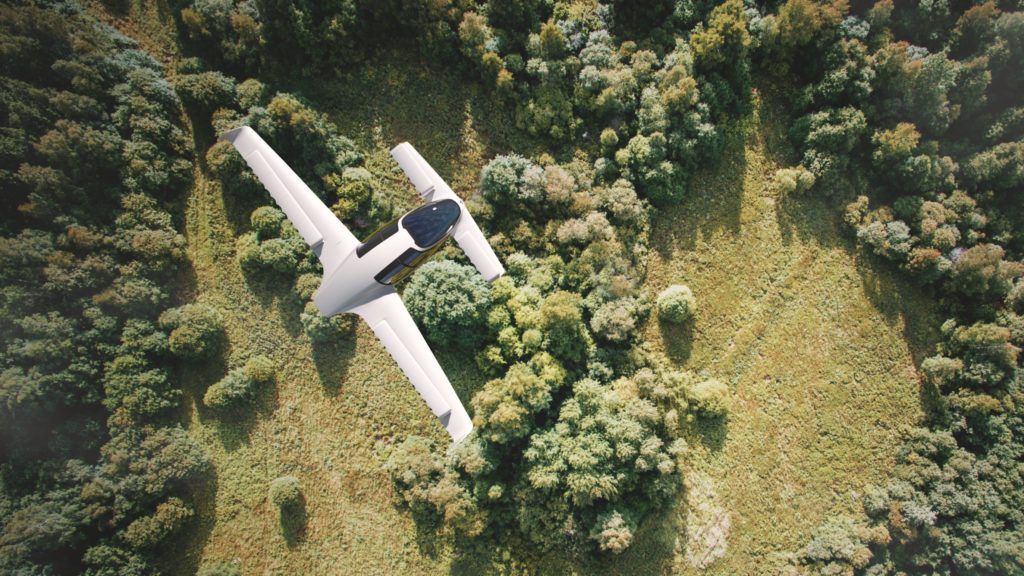In Germany this week a small but well-funded aviation startup successfully completed initial test flights for an aerial transport service with a twist. This is the Lilium Jet, from Lilium. It’s electric, has vertical take-off and landing capabilities and has been designed to be the Uber of the skies.
https://www.youtube.com/watch?v=ohig71bwRUE
Sure, it’s another transport drone. But for several reasons the Lilium Jet feels a lot more feasible than anything we’ve seen from Ehang so far. But let’s start with what makes this concept unique.
Celebrating the landmark moment of the initial test flights, Lilium CEO Daniel Wiegand said: “Seeing the Lilium Jet take to the sky and performing sophisticated manoeuvres with apparent ease is testament to the skill and perseverance of our amazing team.”
“We have solved some of the toughest engineering challenges in aviation to get to this point. “The successful test flight programme shows that our ground-breaking technical design works exactly as we envisioned. We can now turn our focus to designing the five seater production aircraft.”
Why a fixed-wing aircraft with VTOL is a transport gamechanger
The Lilium Jet is a fixed-wing aircraft, but the wings are able to pivot to transfer propulsion between the horizontal and vertical planes. This makes Lilium capable of both VTOL and jet-powered flight, using its wings for lift like a conventional aircraft after take-off. It’s this advanced capability that makes Lilium feasible from an energy point of view.
The company says its craft consumes around 90% less energy than drone-style aircraft, enabling it to achieve a range of more than 300 km with a maximum cruising speed of 300 km/h. In flight, the Jet’s power consumption per km will be comparable to an electric car.
Read more: Ehang Signs Deal to Test Passenger Drone
With VTOL comes a much smaller demand for infrastructure. Take-off and landing for a Lilium Jet only requires a small open space or landing pad. The company hopes that this will allow it to become a genuine alternative to driving and reduce pressures on congested roads.
Electric engines with ‘ultra redundancy’
The Lilium Jet’s electric jet engines work like the turbofan jet engines you’d find in a regular passenger plane: They take in air, compress it and push it out. The only difference with Lilium is that its compressor fan is powered by a high-performance electric motor. As well as making a lot less noise, it’s completely emission-free.
But it’s in terms of safety that Lilium has, quite rightly, focused much of its effort. The company wants to “bring a new safety paradigm into general aviation” through the use of several redundancy systems covering the aircraft’s various components. A single engine failure does not have consequences for the aircraft’s safety or stability; fully redundant computers are flying the airplane and controlling all functions at all times, not allowing dangerous manoeuvres to be made by the pilot; landing and take-off are autonomous, its 36 engines are each independently shielded from one another… it even has a parachute just in case.
Read more: Is Airbus Passenger Drone Concept the Solution to Urban Mobility Problems?
Toy for the super-wealthy or viable public transport option?
The company has positioned its concept as an “aircraft for everyone“, but how realistic is that notion?
There are a few reasons why the Lilium team is hoping its VTOL jet will be a genuine contender as a public transport/affordable on-demand service of the future. First of all, the fact that the Lilium Jet is powered solely by electricity is in its favor. With zero emissions, the project could attract a good amount of investments from governments and transport authorities.
VTOL technology also requires relatively little in terms of infrastructure, especially with an aircraft with a wingspan of 10 metres.
Finally, the Lilium team says that the concept has a relatively small number of moving parts compared to other aircraft. This means fewer inspections and maintenance is required, which is another big money saver.
The Lilium timeline states that its first manned flight will take place in 2019. By 2025 it hopes that its on-demand air transport service will be up and running.
Malek Murison is a freelance writer and editor with a passion for tech trends and innovation. He handles product reviews, major releases and keeps an eye on the enthusiast market for DroneLife.
Email Malek
Twitter:@malekmurison
Subscribe to DroneLife here.
